This post may contain affiliate links. Read more at our disclosure policy.
Learn how to Reverse Sear Ribeye Steak for the greatest steak you’ll ever have!
Reverse sear is an incredible way to cook a steak. Smoke at a low temperature for that unique wood smoke flavor, and then finish your steak hot and fast on your grill for the perfect crust at the perfect temperature every single time. Check out this guide as well, it can be applied to any meat.
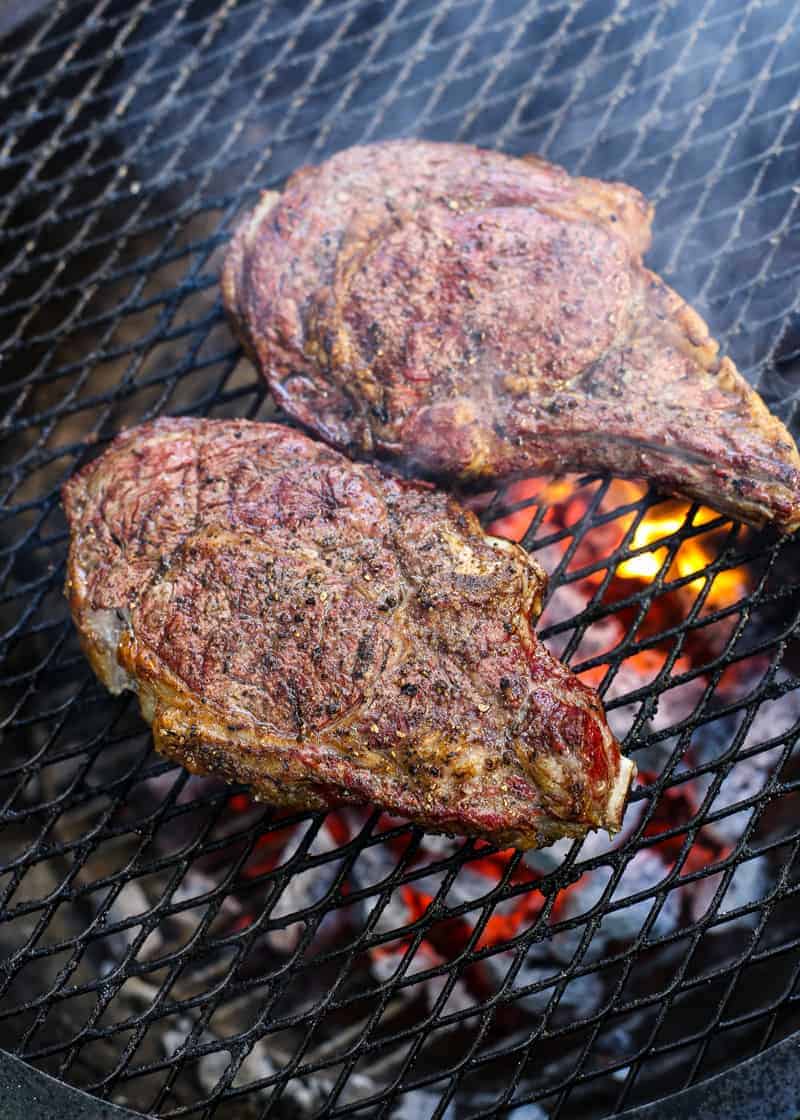
There are so many ways to cook a steak. On the grill, the stovetop, in a stew, in the oven, to name a few. But have you tried something referred to as the reverse sear method? It’s a pretty popular thing right now, and for darn good reason.
What is Reverse Sear Cooking?
Let me explain. When you google “perfectly cooked steak,” what you will typically see is the more traditional restaurant method, which is where the meat is seared hot and then finished in the oven to finish cooking. But what I want to share is something that adds incredible flavor and allows you to finish with that beautiful crusted texture. The reverse sear. And better yet, the SMOKED reverse sear.
And here you thought you couldn’t achieve a perfectly cooked steak on a smoker?!
The idea is, instead of sear first then finish in the oven, you smoke it first at a low temperature to get the smoky flavor, and then finish it by searing (either on a grill or hot stovetop skillet) for the beautiful and flavorful crust. But first, let’s talk about…
The Best Cut for Reverse Sear: Ribeye Steaks
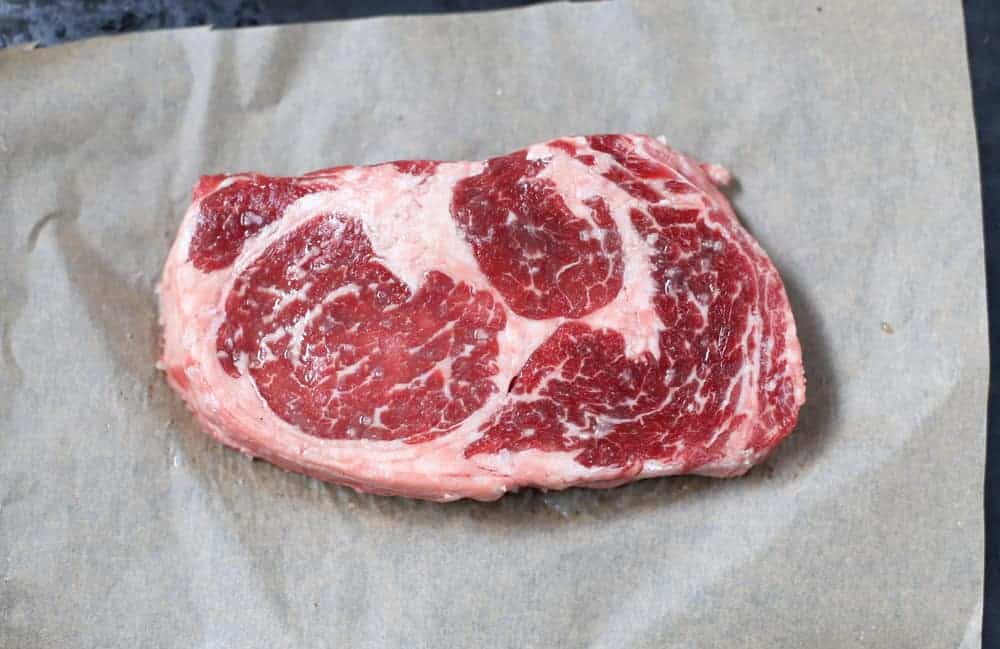
While the reverse sear works for any cut of meat, in this case I find it best with steak. And the thicker the cut of steak — like filet, ribeye steak, porterhouse, cowboy cut, or New York strip – the better. These thicker cuts can take on more smoke, which equates to more flavor without the meat cooking to finished temperature too soon, which could result in an overcooked steak.
For a ribeye look for at least 1 1/2 inches thick. Ask your butcher if they can cut it for you. We love Snake River Farms American Wagyu Ribeyes or their Double R Ranch Prime Ribeyes. Amazing flavor!
How To Season a Steak
Season simply with salt and pepper. That’s it. Nothing more is needed for a good cut of beef (OK, maybe a little granulated garlic too). And if you’re going to invest your money in a quality cut of meat (which is what we always recommend), why drown out those natural flavors with noise (aka too much seasoning). Good meat doesn’t need it. S&P is all you need.
You can use prime, wagyu, or something local. The key is to look for good marbling. We salted this cut on both sides lightly and then left in the fridge for a quick dry brine over a couple of hours. The salt disappears as it is absorbed into the meat.
How to Reverse Sear A Ribeye
It all starts with smoking at a low temperature for flavor and then finishing on high heat for that sear. This is a similar concept to sous vide cooking (which is also all the rage right now for good reason), only done on the smoker (no sous vide appliances necessary). This is also a similar method to these friggin’ amazing smoked burgers with chorizo and smoked poblanos. Those burgers were smoked at low heat and then finished on a hot grill for that irresistible sear.
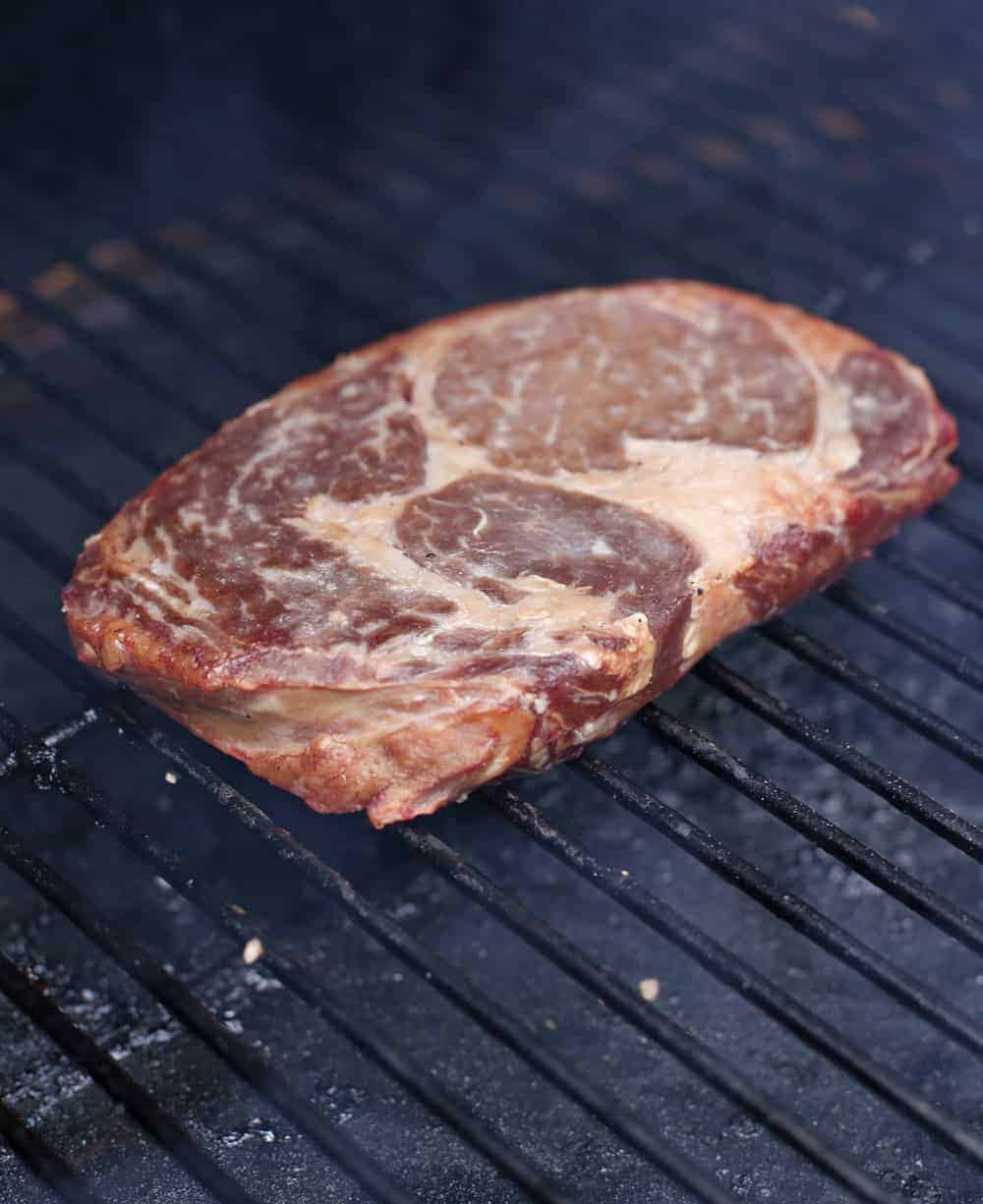
What Temperature do you Reverse Sear Ribeye?
First we get the smoker preheated to 225 degrees (F). And you slowly bring the internal temperature of your meat up while smoking, until the internal temperature of the meat reaches 110 degrees (F). (Note we like our beef rare or cooked to 125 – 127, if you are more a medium rare, take the smoke internal temperature up to 120 degrees).
You’re not trying to cook the steak completely for this step, you’re just adding a layer of incredible flavor while slowly and steadily warming up the meat. Depending on the thickness of the cut this should take around an hour – but temperature is king here! Always cook to temp, not time. This is where it’s vital to have a good thermometer.

For something like this, we use an instant-read thermometer, like the Thermapen MK4 (pictured). You don’t want to mess around with something that’s going to take a long time to get a proper reading, not after you’ve already invested in a good cut of meat and not to mention the time it has taken you to cook.
Once your meat hits the 110 degree mark (or 120 for the end temp if you’re going for medium rare), that’s when you move the steak over direct heat and finish to get that sear mark. (We moved ours from the smoker to the Weber kettle grill that we have nice and hot while the meat was smoking. You can use whatever grill you have that can get hot hot hot.)
Alternatively, you can finish the steak on a hot cast iron pan if you don’t want to heat up a second grill (or if your smoker doesn’t get that hot). Just smoke the meat to 110, then transfer it to your hot cast iron pan over the stovetop.
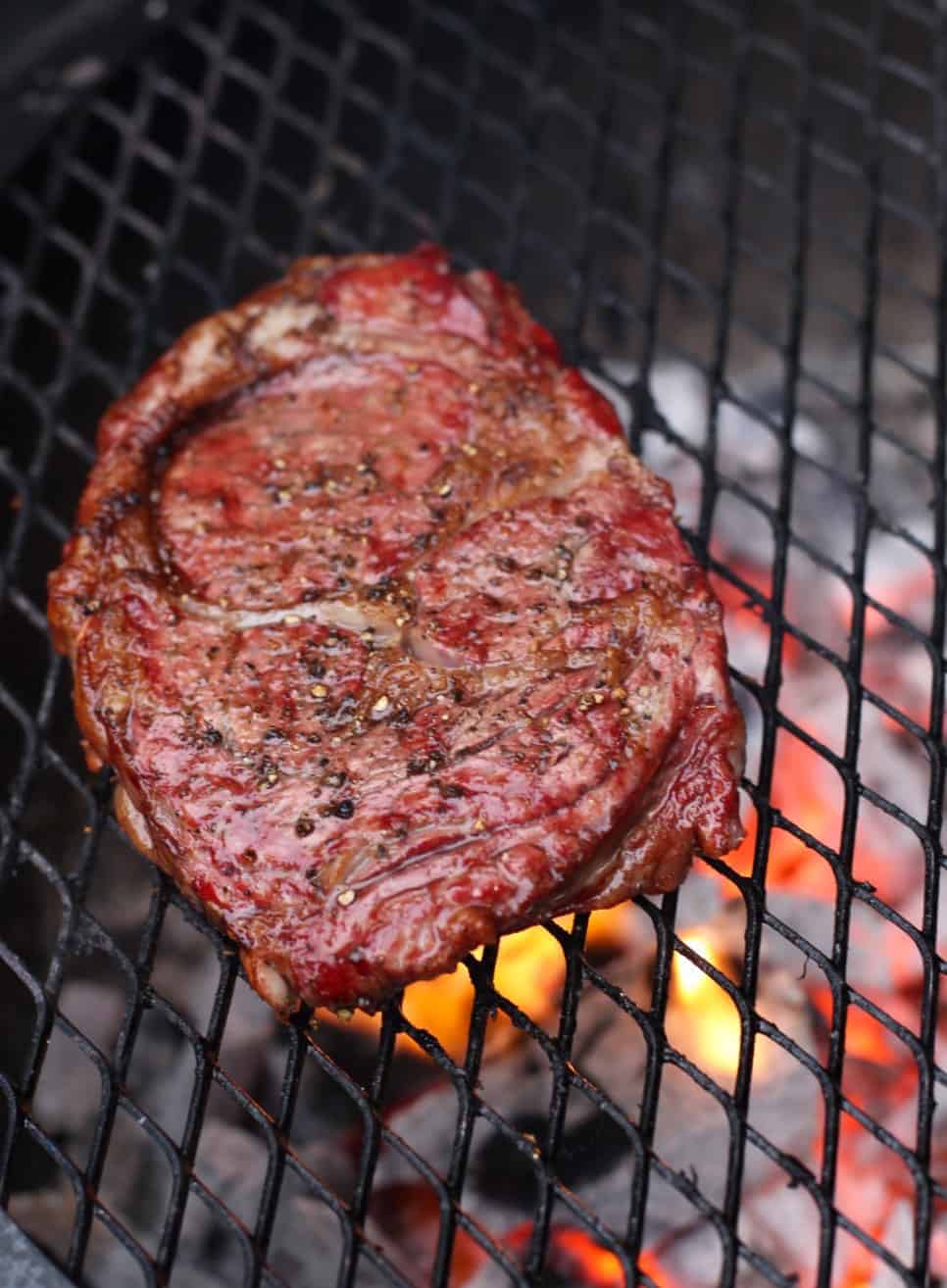
Would you like to save this?
What temperature is Ribeye Done?
I like my steak rare to medium rare so I remove it at 125 – 130 degrees Fahrenheit at the center. So once the internal temperature reaches your desired doneness, let it sit for a few minutes for the juices to redistribute and tent it with foil. It’ll also keep cooking a little bit with that residual heat.
Beef Temperature Ranges
Be sure to take into consideration the carry-over cooking that happens while the steak rests. For steaks remove them 5 degrees lower than your desired temperature. For roasts remove them 10 degrees lower. The steak’s internal temperature will rise as it rests.
| Black and Blue | 100 – 120° Fahrenheit (F) | 37 – 48° Celsius (C) |
| Rare | 120 – 130° F | 48 – 54° C |
| Medium Rare | 130 – 140° F | 54 – 60° C |
| Medium | 140 – 150° F | 60 – 65° C |
| Medium Well (not recommended) | 150 – 160° F | 65 – 71° C |
| Well Done (not recommended) | 160 – 170° F | 71 – 76° C |
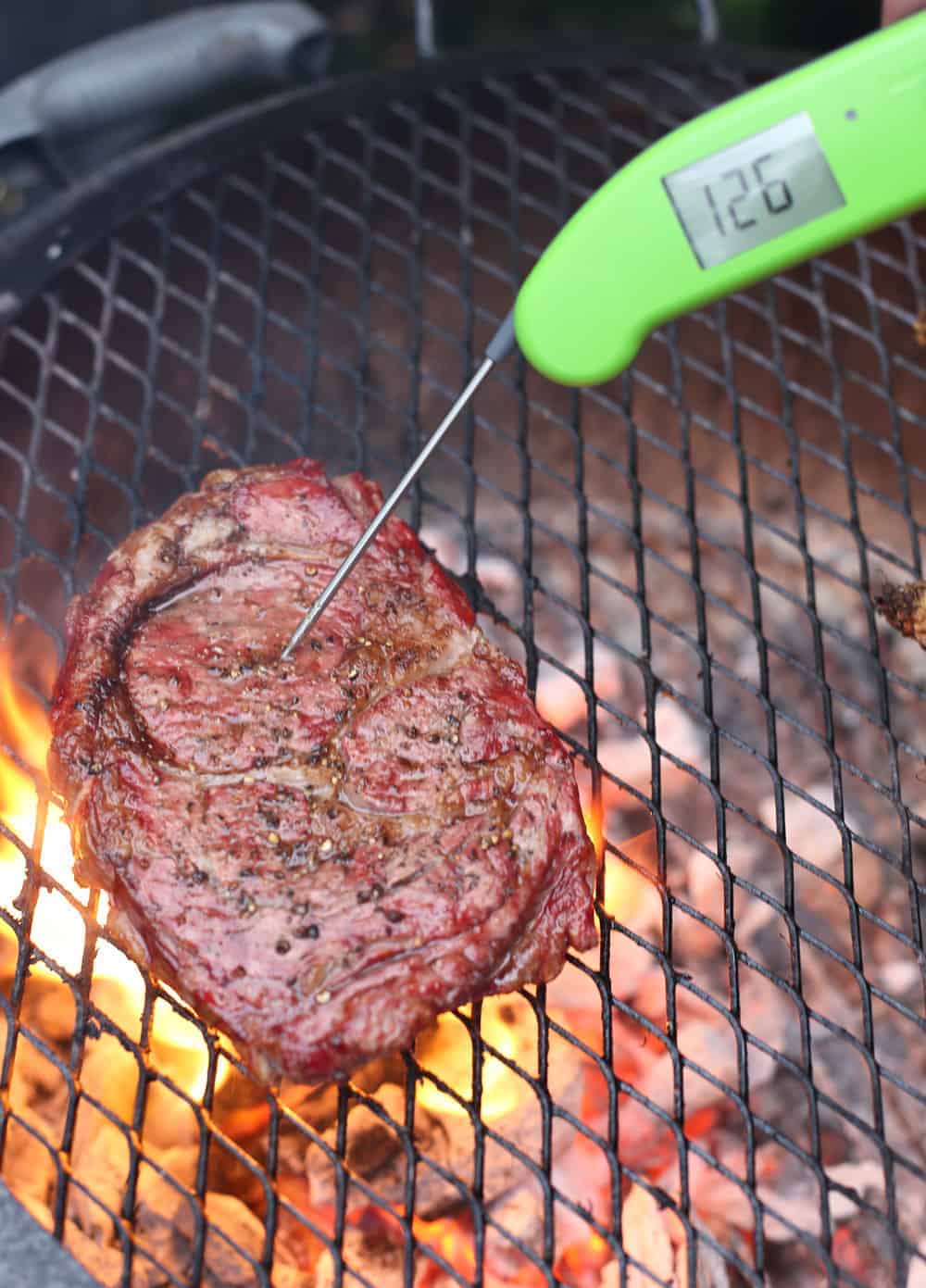
How To Reverse Sear On A Gas Grill
- On a three or more burner grill, turn on one burner to low or medium-low heat.
- Place wood chips in a foil pouch on the grill grates over the flame.
- Place meat on the indirect side. Close lid. Try to keep the temperature of the gas grill under 250 degrees, it’s tough as they have a lot of venting, so adjust your flame as needed. When the meat’s internal temperature reaches 110 degrees, you can remove the foil wood pouch.
- Next, crank up the heat to high and finish with that sear. (Note: It is likely you will replace the foil pouch a few times.)
- Remove when the internal temperature of the meat is to your desired doneness.
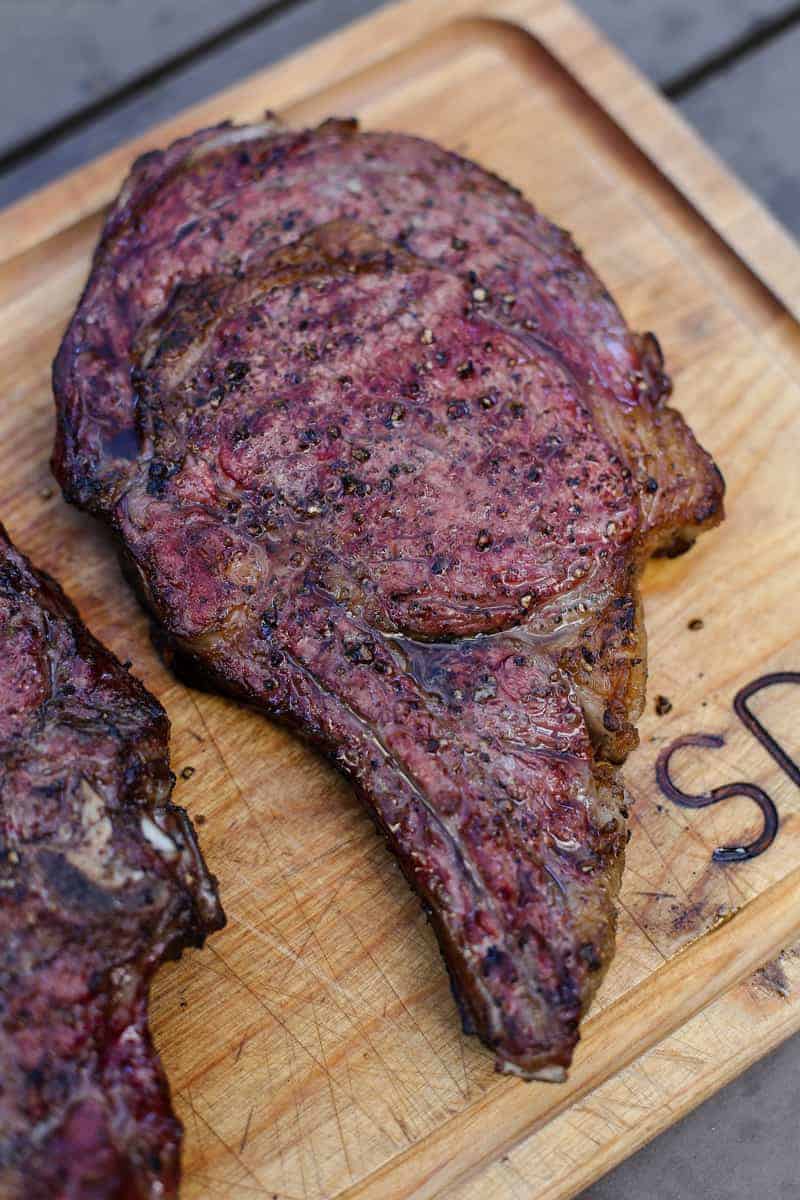
Side Dishes for Steak Dinner
Reverse Sear Ribeye Steak Recipe
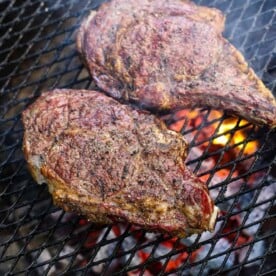
Reverse Sear Ribeye Steak
Ingredients
- 2 16 ounce 1 1/2 inch Thick Ribeye Steaks, We Love Snake River Farms
- ½ tablespoon Kosher Salt
- ½ tablespoon Coarse Black Pepper
Instructions
Preparation:
- Salt the steaks on both sides and place them on a cookie sheet in a refrigerator for up to two hours for the dry brine. Remove about 20 minutes before smoking and add pepper. (we’re not using an oil here due to the dry brine or salting)
Smoking:
- Preheat smoker to 225 degrees F (we like cherry wood), and remove the steak from the fridge.
- Apply the pepper on the steaks, and then place them on the smoker. They will take on that flavor and start to turn a reddish hue. When the internal temperature (IT) reaches 110 degrees (F), remove from the smoker and prepare for the grill. This takes roughly an hour.
Grilling:
- Prepare your cooker for direct heat targeting 500 degrees F over the direct heat. In this case we used a Weber kettle grill. You can also do this before the steak reaches 100 degrees (F). Or you can wait while you prep your sides.
- Place the steak over the direct heat for about 3 minutes. You're looking for a nice crust. The IT will come up fast on the steak, especially if you have just taken off the smoker. (some may want to re-season at this point, it's up to you. We don't. The dry brine or salt with the pepper was all we needed. Try it without re-seasoning first and then adjust. It's easier to add salt and flavor later rather than taking it away)
- Flip the steak for another 3 minutes until the IT reaches your desired doneness, we like 125 degrees (F) for rare. Let rest for 10 minutes with a loosely tented foil for the juices to reabsorb into the meat then cut and serve.
Video
Nutrition
Nutrition information is automatically calculated, so should only be used as an approximation.
What if I only have a smoker, and no grill?
If you have a hard time getting your smoker to a sear temperature, have no fear. Just finish it on a cast iron pan over high heat. Get the cast iron pan hot, you know it’s hot enough when you add extra virgin olive oil to the pan and it is slightly bubbly and smoking just before you put the steak on. Sear each side for 2 -3 minutes or until the steak comes to the temperature you like.
More Reverse Sear resources
*This recipe was originally published in May 2016, and updated in May 2020 with some updated information. The recipe remains the same.
***While this post does contain affiliate links, it is not a sponsored post at all, nor were we paid by anybody to write this! We are just huge fans of these thermometers and have been using our own Thermapen for years. Whether a Thermapen or not, we truly believe a good thermometer is absolutely essential for grilling and smoking meat, especially using a method like reverse sear! Your perfectly cooked meat will thank you (and so will the friends you serve it to).
If you like this recipe we’d truly appreciate it if you would give this recipe a star review! And if you share any of your pics on Instagram use the hashtag #vindulge. We LOVE to see it when you cook our recipes.
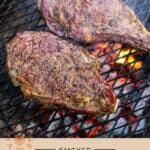
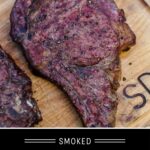
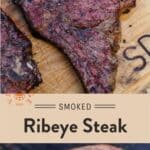
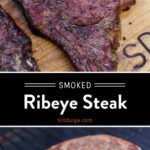

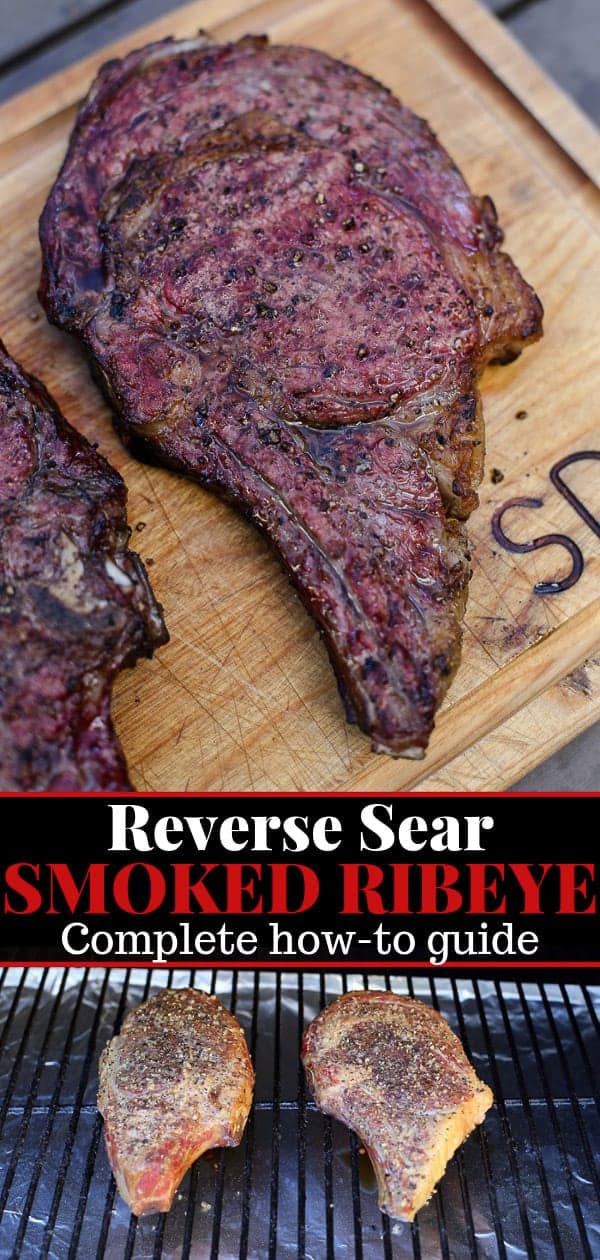

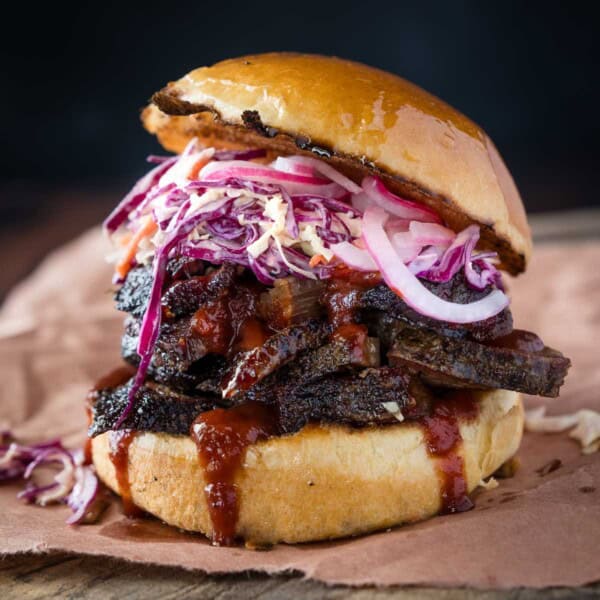
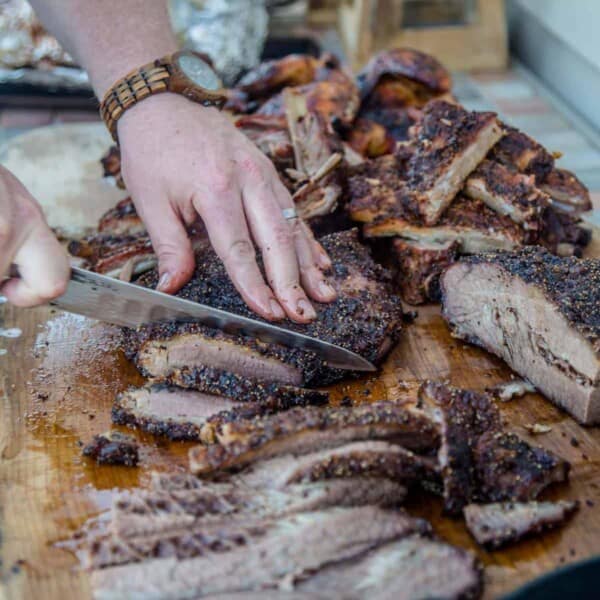
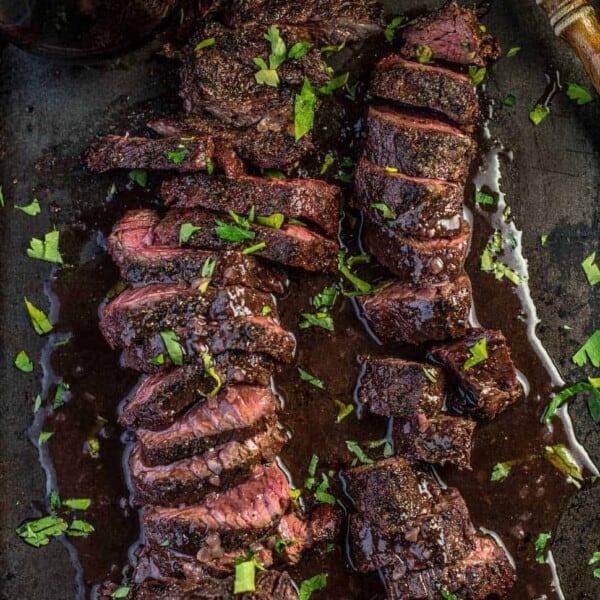
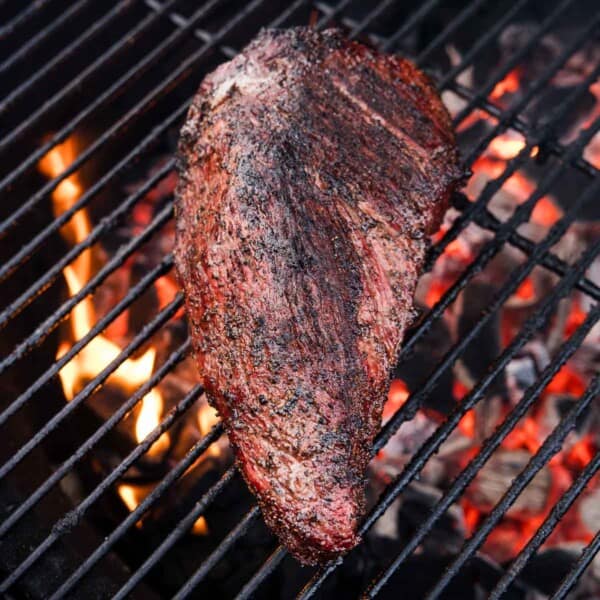
















Going to try this on a London Broil and on the rare side, maybe with some different marinades just for fun.
OHHHHH please let us know how it goes with the broil!!!
I am going to be trying this technique tomorrow for Thanksgiving. Unfortunately, my in-laws like medium well steaks, and I like mine mid-rare. How would you recommend timing this so everyone eats at the same time and nobody has a cold steak?
I have 2″ thick NY strips, planning on the smoking portion in an offset smoker @ 225 and finishing on screaming hot LP.
Hopefully someone reads this and can reply in time!
Thanks,
Chris
Chris, What I recommend, is to do the reverse sear to each persons liking in advance. So for yours, cook it to 110 to 115 and cook the other closer to 140 internal temp. Yours will take 45 minutes to an hour, theirs may take 90 minutes. Then you can sear off the finish at the exact same time by planning that rough timeframe.
Another option is to smoke first. Then you can put into the fridge. When you are ready for dinner, you can pull them out about 30 minutes ahead of time, and then you can sear them in a pan, so they are done at the exact same time. Putting into the fridge will halt the cooking process quickly and retain moisture. It won’t be as juicy as say, fresh off the grill, but it is an option.
(I’ll withhold judgement as they are your in-laws 😉 we have to make our in-laws happy!)
Have smoked the tender beef cuts for years — T-bone, porterhouse, prime rib et al — BEFORE grilling or roasting; never been disappointed. But I’ve never referred to the process as “reverse sear”.
I concur that temperature is key and IT of > 135º F will begin to noticeably dry out and toughen these cuts. Once you hit 135º F in the thickest area of the cut — at uniform distance(s) from the heat source — you’ve likely already dried and toughened the thinner portions of the cut, and hastened the evaporation of fluids so vital to flavor. Key takeaway: Do not overcook.
Nailed it exactly! And while we will never criticize those who like a well done steak, we strongly encourage folk to try it a little more rare or medium rare to see how that adds to the flavor!
I tried this technic today. Ribeye was boneless @ 1.75″_Salt/Pepper/GarlicPowder.
Cheap big box smoker <150$
Kept temp @ 220 for 1 hour, let steak sit 5-10 minutes
Seared over burning wood with flames for 2 minutes each side
STEAK WAS INCREDIBLE!!!!
Maybe next time I pull it off about 10 minutes sooner, maybe…
That’s great feedback! We’re so happy to hear that. And you know, that’s exactly what I made my husband yesterday for Father’s Day! This very recipe 🙂 Great minds think alike!!
Thanks for the great recipe, but I found that smoking at 150 didn’t render the fat very well. The two times I tried it I smoked at 150 for about an hour and a half then seared at about 500 for a minute and a half a side. How hot should I smoke to render the fat a bit better. Or do you have any other tips for that.
Jeff, you bring up a great point and we just updated the recipe, thanks for the comment! We have since become bigger fans of smoking at 225 degrees. We actually don’t try to render too much of the fat, as the fat will take on a lot of the smoke flavor. We do trim fat where needed, especially on a rib eye, when we start removing the side fat. Then the edges still have a little fat for flavor.
Great post! Have nice day ! 🙂 ropqq
Roughly how long should the smoking stage take? Seems like it might be a while, even with leaving it out for twenty minutes prior.
Chris, it will depend on your cut of meat and thickness. If you run your smoke temperature at 225 to 250 a 1 1/2 inch cut of ribeye will likely take about an hour. You want to really focus on temp. Look for pulling the meat when the internal temp hits 110. Then put on your screeching hot sear until the internal temp hits 125 for rare. (that’s how we like it) If you are a medium rare (135) then smoke until the internal temp is 120. The key is not to smoke to the finished temperature, it’s to finish to your temperature during the sear.
Mary, What about smoking, cooling and then searing at a later time/date? Maybe even freeze?
Brian, personally i try not to freeze (or buy pre frozen) meat because it damages the cellular structure of the meat. I know I can’t always do that, but that’s why I don’t freeze. That said, you can definitely pre smoke and then finish at a later date. I would bring the pre smoked meat to a room temperature before cooking. If you sear right from the fridge it takes longer and you run the risk of pushing beyond your desired doneness. Hope that helps!
We use the reverse sear method when we smoke prime rib (save the bones for soup!). How long do you think the ribeyes could be held in a post-smoke, pre-sear state?
3 mins 😛
I’ve never heard of the reverse sear before, but I definitely want to eat it! And I’m glad you addressed the corn that I saw aside in your pic because I started to really want that too! Corn with a little char is the best way to have corn I think!
I’ve never heard of this technique. But I did make a corn-black bean salad at the beginning of the week to go with tortilla soup, and it was phenomenal!
Oooh, yum!! I’ve never heard of a “reverse sear” but this recipe sounds simple and delicious! I’m looking forward to grilling this season!